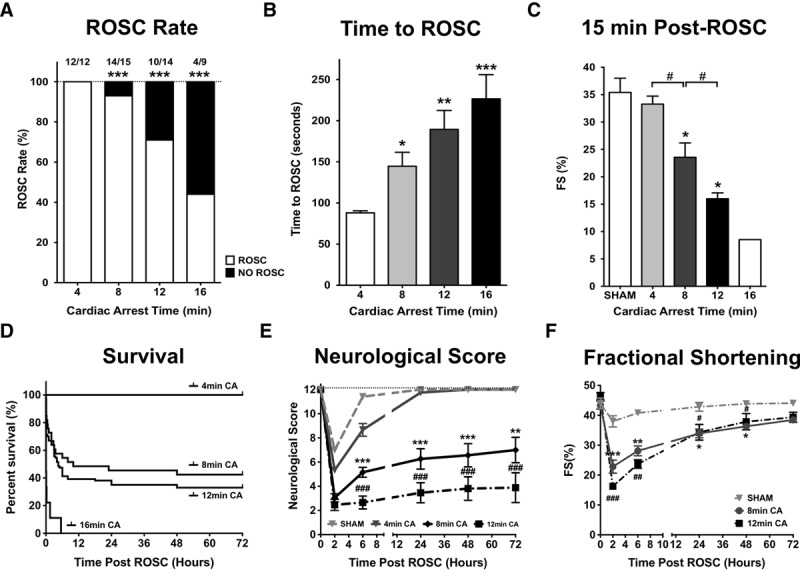Figure 1.

Duration of cardiac arrest determines postcardiopulmonary resuscitation (CPR) outcomes. A, Return of spontaneous circulation (ROSC) rates following 4, 8, 12, and 16 min of cardiac arrest (CA). B, Time of CPR to achieve ROSC. n = 12, 15, 14, and 9, respectively. *p < 0.05; **p < 0.01; ***p < 0.001 versus 4-min group. C, Percent left ventricular fractional shortening 15 min after achieving ROSC for different durations of CA. n = 17, 12, 12, 12, and 1, respectively. D, Kaplan-Meyer Curve demonstrating survival following different durations of CA. n = 22, 28, 34, and 9, respectively. E, Neurologic scores following CA of increasing duration. n = 12, respectively. F, Percent left ventricular fractional shortening recovery over time following CA. n = 7, 7, and 9, respectively. *p < 0.05; **p < 0.01; ***p < 0.001 versus sham. #p < 0.05.
